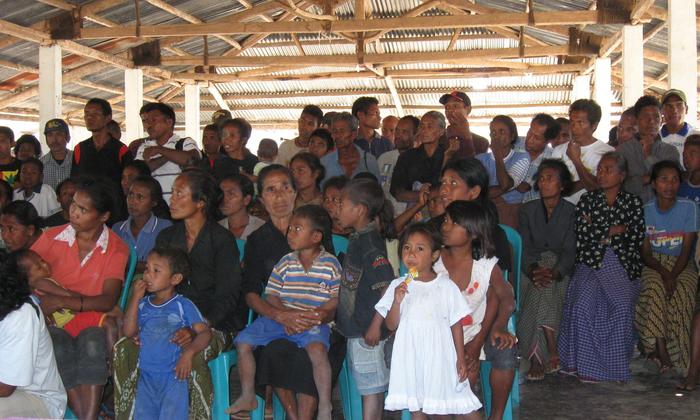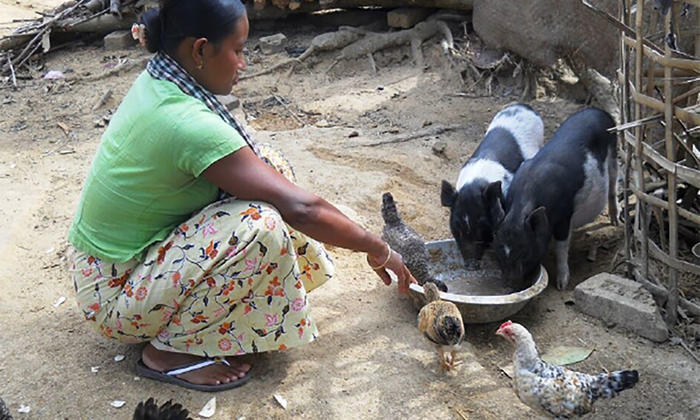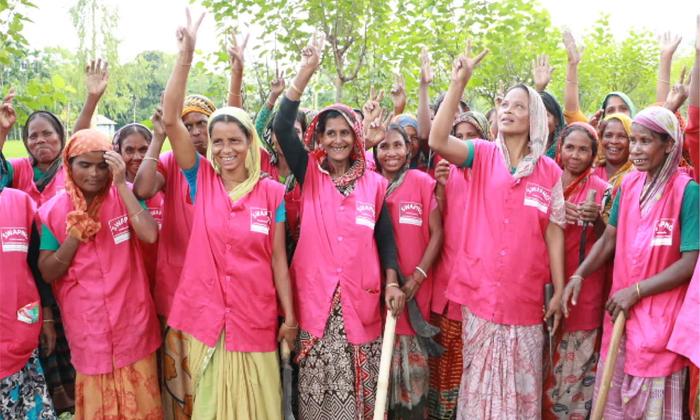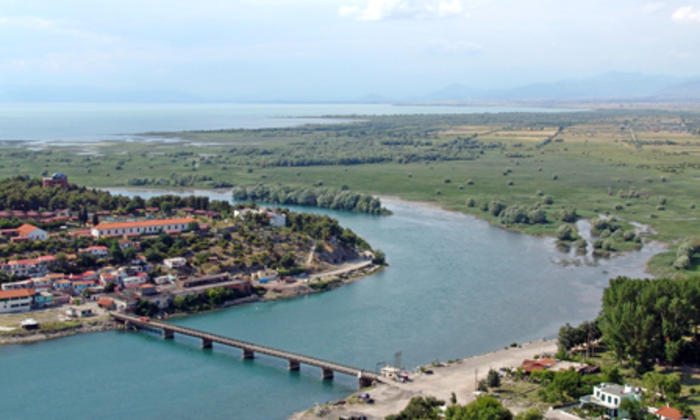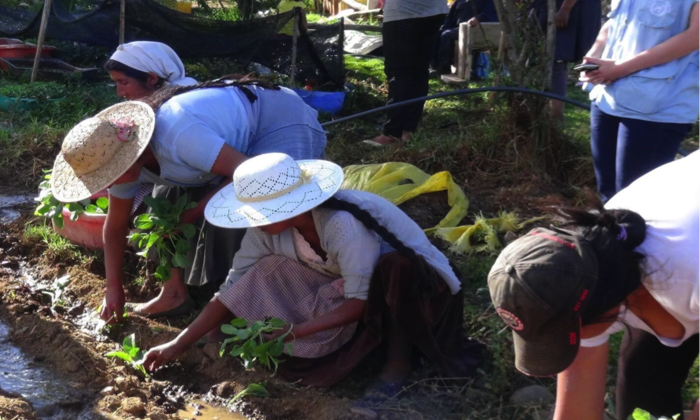When the Programme started, irrigated agriculture in the region covered 10 per cent of the total area but consumed 95 per cent of the water resources.
Case study
Multi-disciplinary teams bring agricultural adaptation to climate change in China

SDGs ADDRESSED
This case study is based on lessons from the joint programme, The China Climate Change Partnership Framework
Read more
Chapters
Project Partners

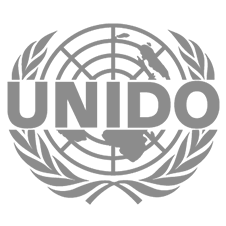




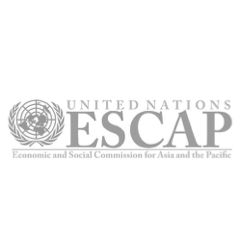


1. SUMMARY
Climate change impacts on plant and animal phenology, crop structure and agricultural production were resulting in adverse effects to the agricultural economy in the Yellow River Basin in China. Agriculture in the region faced several challenges including the degradation of natural resources, competition for resources with other sectors and large urban-rural disparities in economic development.
“The China climate change partnership framework” (the Programme) chose to address these challenges by introducing agricultural practices that were environmentally sound and resilient to climate change impacts. This involved both policy level and field level work.
We found that to address these issues one of the most useful and effective tools at our disposal was the use of multi-disciplinary teams, which were comprised not just of experts in the field of agriculture but also specialists in water management, climate change, environment and economics. These teams were effective in developing comprehensive solutions to sustainable and climate resilient agricultural production.
The Programme introduced practices for climate-resilient and environmentally sound agricultural production (C-RESAP) in the Yellow River Basin and proposed potential policy support options to the Chinese Government. C-RESAP is an agricultural production in which, taking into consideration climate change threats and the status of natural resources, yields are maximized, emissions and waste are reduced, negative impacts to ecosystems are minimized and the resulting agricultural products are safe.

Farmers working in demonstration fields, Zhangqiu, Shandong Province
2. THE SITUATION
The Yellow River, or Huang He, is known as the cradle of civilization in China. As the second longest river in the country and the sixth longest in the world, it runs over 5,000 kilometres and cuts through nine provinces. Its importance and size are matched by the growing population living along its banks. But population pressure and increases in agricultural production have also accelerated degradation of the natural resources along the river. By the year 2000, about 26 per cent of the Yellow River basin had already been urbanized, with groundwater extractions reaching threatening levels. Climate change was impacting the already fragile water resource, changing the conditions for crop growth, and affecting crop yield with the possibility of changing the distribution of crop species.
For some years, the Yellow River had been experiencing environmental degradation and socio-economic challenges. Population pressure had accelerated the depletion of resources from the expansion of agriculture on the Loess plateau, where soil erosion had increased. Deforestation was also a problem in the area. Impoverished farmers were migrating to the cities.
When the Programme started, irrigated agriculture in the region covered 10 per cent of the total area but consumed 95 per cent of the water resources. Downstream, agriculture and ecosystems suffered from water shortages. Water availability for agriculture in the Yellow River basin was increasingly threatened by rapid growth in the demand for industrial and urban water, the need to flush sediment from the river’s lower reaches, other environmental demands and growing water pollution. Climate change was affecting the already fragile water resource supply, changing the conditions for crop growth, affecting crop yield and was, moreover, likely to change the distribution of crop species.
3. STRATEGY
The Programme chose to address the challenges in the Yellow River basin by introducing agricultural practices that were both environmentally sound and resilient to climate change impacts. One of the most effective measures was using multi-disciplinary teams which were made up of not only experts in the fields of agriculture, but also specialists in the fields of water management, climate change, environment and economics. These teams developed solutions for sustainable and climate-resilient agricultural production (C-RESAP) which were proposed to the Chinese Government for implementation. The C-RESAP took into consideration climate change threats and the status of natural resources so that agricultural yields were maximized, emissions and wastes reduced, and the negative impacts to ecosystems minimized, resulting in safe agricultural practices.
This was an important step towards collaboration among different institutions since the Chinese Academy of Agricultural Sciences (CAAS) invited members from the Chinese Academy of Sciences (CAS), and other universities to participate in the project as members of the national multidisciplinary team.
The national team was created during the inception meeting and provincial teams in Ningxia, Shaanxi, Henan and Shandong provinces shortly afterwards. The team was comprised of experts from the Government as well as from different research institutes and universities with experience in agriculture, resource use planning, climate change, information management, knowledge transfer, extension and socioeconomic issues. These teams were responsible for implementing all activities at the provincial level, including delivery of training, demonstrations, provision of technical advice and extension services. They compiled situational analysis reports using information on the Yellow River Basin, with a particular focus on biophysical, socioeconomic and technological aspects provided from different stakeholders.
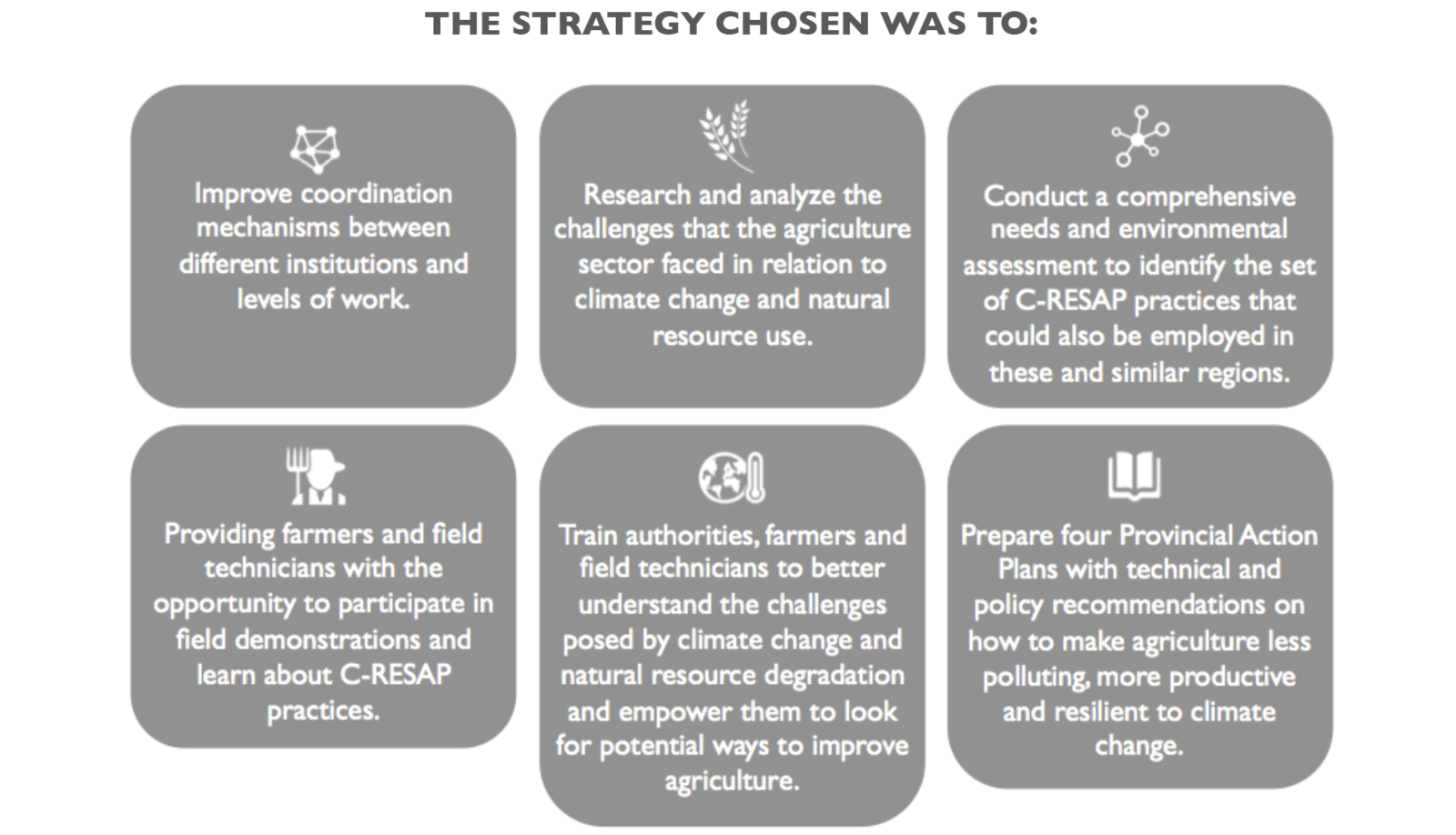
4. RESULTS AND IMPACT
The strategy used achieved the following goals:
- Improved coordination mechanisms between different institutions and levels of work.
- Research and analysis of the challenges that the agricultural sector faced in relation to climate change and natural resource use in four pilot provinces (Henan, Ningxia, Shaanxi and Shandong). The research revealed a decline in water resources, over-extraction of groundwater, loss of soil fertility, salinization and soil and water pollution due to excessive use of fertilizers.
- A comprehensive needs and environmental assessment that identified the C-RESAP practices which could be employed in these and similar regions.
- Over 1,000 farming households, 400 technicians and 140 local officials were given training in C-RESAP in 13 pilot sites in the 4 pilot provinces in order to help them better understand the challenges posed by climate change and natural resource degradation.
- Provincial Action Plans for C-RESAP on how to make agriculture less polluting and more productive and resilient to climate change were prepared in each of the four pilot provinces with the participation of farmers, field technicians, local authorities and researchers. These plans were also shared at the national level to serve as examples for other provinces.
- The Programme also investigated clean coal technologies and rural energy issues, demonstrated waste heat recovery power generation in the coal gangue brick sector, and at a national level helped contribute to the development of the Basic Energy Law.
TRAINED AT C-RESAP:

5. CHALLENGES
One of the main challenges was that the Programme started in the middle of the year instead of in January, which was not in sync with the crop cycle and required a major reorganization of the initiative. However, having a flexible approach to the project’s activities, as well as committed participants, allowed the activities to be carried out successfully.

Another challenge was that, despite significant progress in introducing alternative sources of energy such as biomass pellets and biogas, the Chinese economy was still very reliant on fossil fuels, and especially coal, for its energy needs. There is still room for China to significantly improve its energy efficiency as it has an energy intensity 1.5 times higher than the average level in developed nations.

Gender inequality continued to remain an obstacle to China’s achievement of the MDGs. An increase in women’s share of agricultural production over the years made them more vulnerable to climate change impacts and, in the face of natural disasters, women who naturally played the role of caregiver in the family were likely to face an increased burden of work.

6. LESSONS LEARNED
The main lesson learned from the Programme was that for implementing climate resilient and environmentally sound agricultural production, it was necessary to have multi-disciplinary teams. The introduction of the C-RESAP approach was meant to help the formation of these teams, which would be responsible for implementing all the activities at the provincial levels, including delivery of training, provision of technical advice and services. They also compiled the situational analysis reports that used information on the Yellow River basin and focused on the bio-physical, socioeconomic and technological aspects provided by different stakeholders.
China has a large and still growing population, and limited arable land. Unless China’s water resources are effectively managed, water scarcity could have serious knock-on effects on livelihoods and human health and ultimately, if the population grows too significantly, on broader economic and social development. Policies and technologies concerning water allocation, conservation and pollution control as well as adaptation of agriculture to climate change need to accurately reflect the current and probable future situations, and their enforcement should be a priority.
Overall, less work has been done on China’s vulnerability to climate change and its climate change adaptation needs than on climate change mitigation. China’s Scientific and Technological Actions on Climate Change identified as priority areas the assessment of impacts on the major vulnerable sectors and the development of adaptation measures. The actions taken in the Programme responded to these policy directives from the Government, although much more can still be done.
From the many issues tackled under the Programme, it was apparent that the challenges posed by climate change are complex and touch upon many different sectors. As such, they were resistant to being divided up by administrative or geographic areas, and could not be solved effectively by any one agency alone. Real solutions could only be identified if proper consideration was given to all sectors that were impacted.
The Programme showed that early warning systems and disaster risk reduction mechanisms needed to be enhanced to prevent, or at least reduce, the effects of natural disasters. Local authorities, communities, farmers and technicians in all fields needed to understand better the challenges posed by climate change and environmental degradation. They also needed to know how to improve and adapt to climate change.
The funding available for addressing climate change needs to be increased to be able to widely disseminate best practices and further scale up results. Given the competition to attract funding from international sources, fundraising at provincial and national levels should be a priority. Contributions from different sectors of society, including the Government, the private sector and communities, should also be explored, as should green taxes, carbon trading and enterprise involvement with capacity and infrastructure building.
Gender equality should be recognized as a cross-cutting issue in the development of future climate change and environment-related projects. Further work is needed to understand the gender-related impacts of climate change. Gender-related targets need to be identified and incorporated into monitoring and evaluation frameworks and data needs to be disaggregated by gender. Women should be involved in decision-making and should be fully represented in stakeholder and policy consultation groups.
7. SUSTAINABILITY AND POTENTIAL FOR REPLICATION
Given the far-reaching impacts of climate change on different parts of society and the economy, a sustained multi-disciplinary approach is recommended for replicating the Programme.
Specifically, with respect to the implementation of C-RESAP activities, it is important to carefully identify the pilot sites, as there are many challenges associated with this, including the ability of the Programme to synchronize with crop cycles. Unknown factors, such as changing weather conditions, can lead to the delay of activities. Due to such uncertainties, for implementing C-RESAP activities the following is recommended:
- Identifying farmers and technicians who have a very strong interest and are committed to both improving their agricultural practices and dedicating their time to the multiple trainings necessary.
- Using awareness raising to ensure all participants are informed of the requirements and potential delays in implementing C-RESAP.
- Allowing for flexibility in the project’s activities and timing to allow for unplanned events such as bad weather.
Inter-agency relationships established through the Programme have ensured there will be better communication and coordination on C-RESAP in future.


